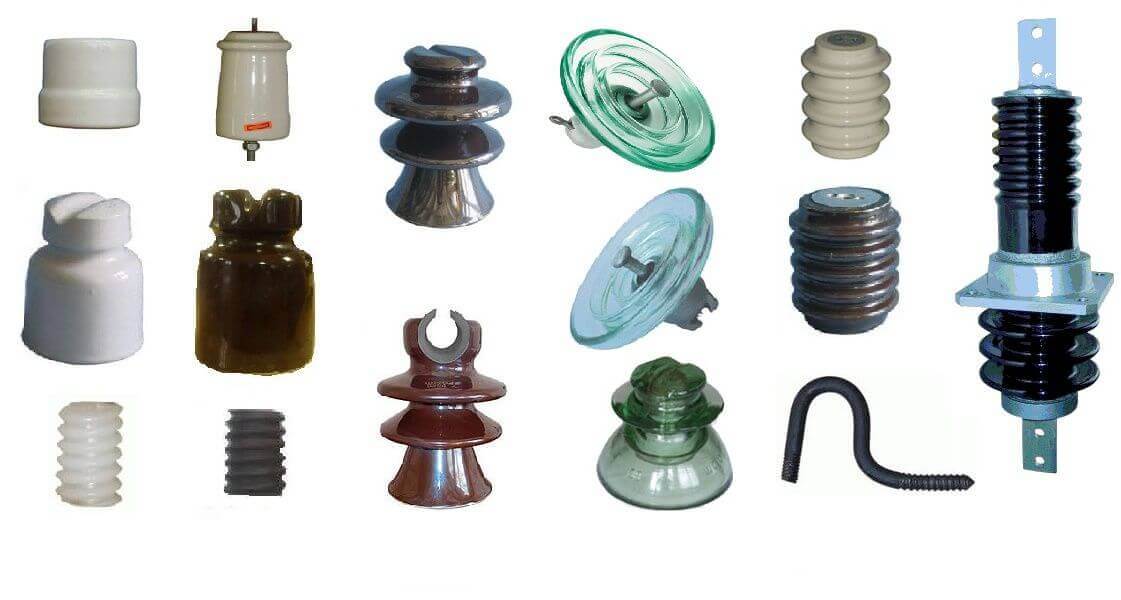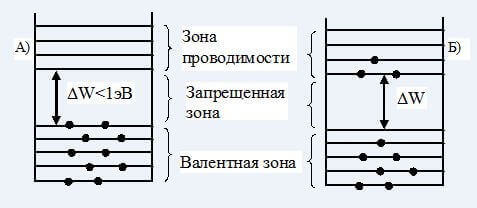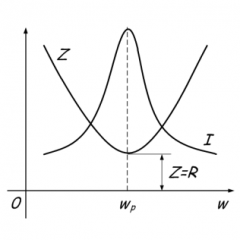What are conductors, semiconductors and dielectrics
What is a conductor?
A substance in which free charge carriers are present is called a conductor. The movement of free carriers is called thermal. The main characteristic of a conductor is its resistance (R) or conductivity (G) - the reciprocal of the resistance.
G = 1 / R
In simple words - a conductor conducts current.
Metals can be attributed to such substances, but if we talk about non-metals, then, for example, carbon is an excellent conductor, found application in sliding contacts, for example, electric motor brushes. Moist soil, solutions of salts and acids in water, the human body also conducts current, but their electrical conductivity is often less than that of copper or aluminum, for example.
Metals are excellent conductors, precisely because of the large number of free charge carriers in their structure. Under the influence of an electric field, the charges begin to move, as well as redistribute, the phenomenon of electrostatic induction is observed.
What is a dielectric?
Dielectrics are substances that do not conduct current, or conduct, but very poorly. They do not have free charge carriers, because the bonding of atomic particles is strong enough to form free carriers, therefore, under the influence of an electric field, a current does not arise in the dielectric.
Gas, glass, ceramics, porcelain, some resins, textolite, carbolite, distilled water, dry wood, rubber - are dielectrics and do not conduct electric current. In everyday life, dielectrics are found everywhere, for example, electrical appliance cases, electrical switches, plugs, sockets, etc. are made from them. In power lines, insulators are made of dielectrics.
However, in the presence of certain factors, for example, an increased level of humidity, an electric field strength above the permissible value, etc., lead to the fact that the material begins to lose its dielectric functions and becomes a conductor. Sometimes you can hear phrases like “breakdown of the insulator” - this is the phenomenon described above.
In short, the main properties of a dielectric in the field of electricity are electrical insulating. It is the ability to impede the flow of current that protects a person from electrical injuries and other troubles. The main characteristic of a dielectric is electric strength - a value equal to its breakdown voltage.
What is a semiconductor?
The semiconductor conducts an electric current, but not like metals, but subject to certain conditions - giving the substance energy in the right quantities.This is due to the fact that there are too few free carriers (holes and electrons) or there are none at all, but if you apply a certain amount of energy, they will appear. Energy can be of various forms - electrical, thermal. Also, free holes and electrons in a semiconductor can arise under the influence of radiation, for example, in the UV spectrum.
Where are semiconductors used? They make transistors, thyristors, diodes, microcircuits, LEDs and more. These materials include silicon, germanium, mixtures of different materials, for example, galium arsenide, selenium, arsenic.
To understand why a semiconductor conducts electric current, but not like metals, it is necessary to consider these materials from the point of view of band theory.
Zone Theory
Zone theory describes the presence or absence of free charge carriers relative to certain energy layers. The energy level or layer is the amount of energy of electrons (nuclei of atoms, molecules - simple particles), they are measured in the value of Electron volts (EV).
The image below shows three types of materials with their energy levels:
Please note that the conductor energy levels from the valence band to the conduction band are combined in an inextricable diagram. The conduction and valence bands overlap each other, this is called the overlap zone. Depending on the presence of an electric field (voltage), temperature, and other factors, the number of electrons can vary. Thanks to the above, electrons can move in conductors, even if you tell them some minimal amount of energy.
A semiconductor has a certain forbidden between the valence band and the conduction band. The band gap describes how much energy needs to be reported to the semiconductor in order for the current to flow.
In a dielectric, the diagram is similar to the one that describes semiconductors, but the difference is only in the band gap - it is many times large here. The differences are due to the internal structure and substance.
We examined the main three types of materials and gave examples and features. Their main difference is the ability to conduct current. Therefore, each of them has found its own sphere of application: conductors are used to transfer electricity, dielectrics - for insulation of live parts, semiconductors - for electronics. We hope that the information provided has helped you understand what are the conductors, semiconductors and dielectrics in an electric field, as well as what is the difference between them.
Finally, we recommend watching a useful video on the topic:
Surely you do not know:










